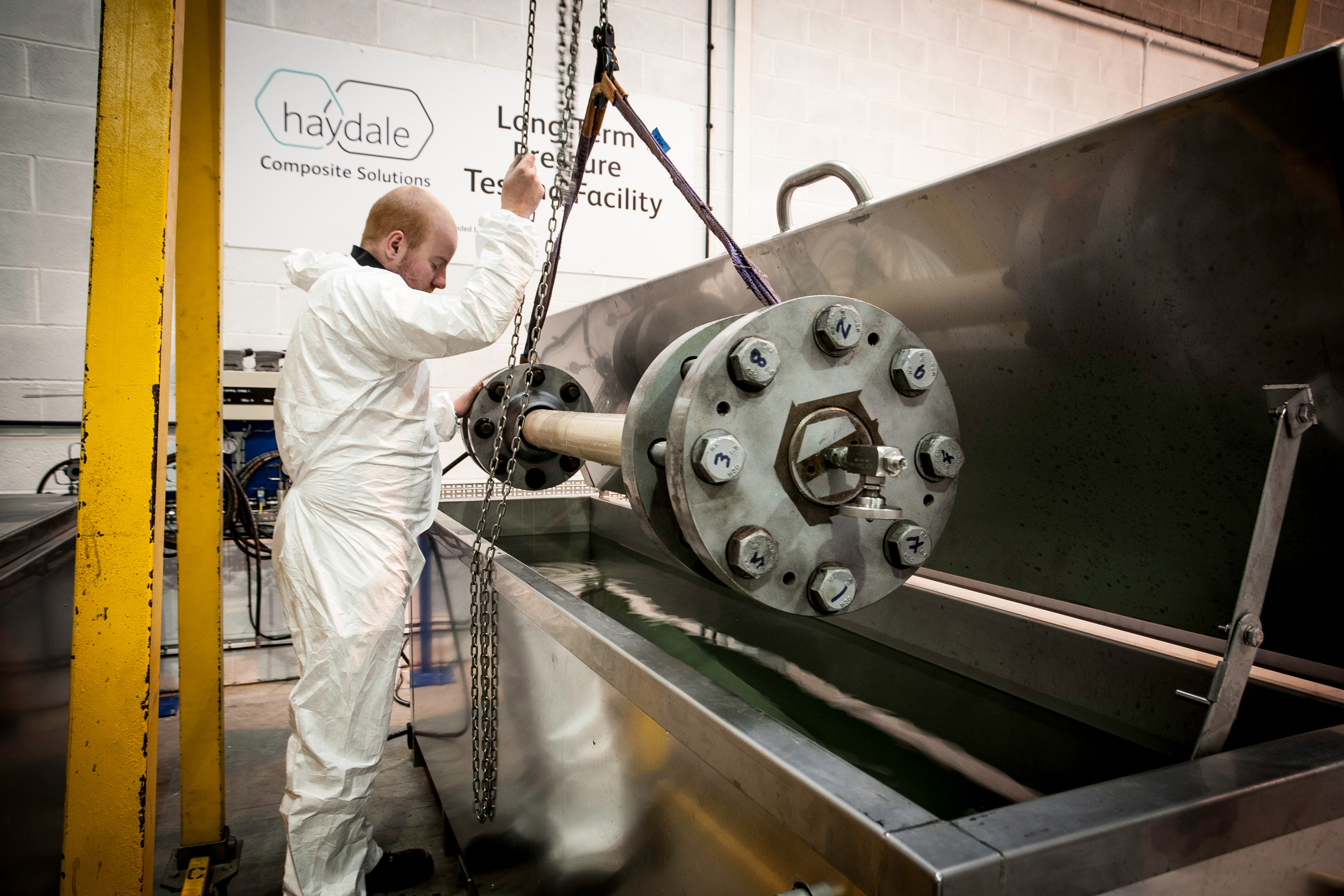
Haydale Composite Solutions (HCS) Ltd has been awarded a grant to open a composite pipe testing facility in the UK.
The new facility for long term testing consists of eight independently controlled tanks which can carry out short and long term pressure testing of composite pipes up to 500 bar and at temperatures up to 80°C. The facility can conduct short term burst pressure (STBP) tests, determine long term hydrostatic pressure (LTHP) rating as well as performing dynamic, fatigue and cyclic testing of composite pipes to a range of international standards including API 15S, ISO 14692 and ASTM D2992. According to the company, the new facility will enable HCS to accelerate the development and approval of new materials and designs that can be used in the construction of oil and gas pipelines. HCS is currently developing graphene-enhanced polymer materials for use in pipeline construction and this facility will assist in the testing, approval and certification of these new materials.
New materials
‘Successful commissioning of this facility is a major step towards delivering our new range of thermoplastic pipes,’ said Nigel Finney, HCS commercial director. ‘The generation of long term (10,000 hours) test data is vital in obtaining approval for the use of new materials in oil and gas pipeline systems. This facility enables us to simultaneously test a range of materials and designs, thereby enabling us to quickly optimise such products before performing full 10,000-hour hydrostatic test certification.’ ‘We see a wide range of benefits in utilising graphene enhanced polymers for oil and gas pipeline systems, including improved strength, stiffness and toughness, increased permeation resistance and enhanced fatigue performance,’ said Gerry Boyce, MD of HCS.
This story uses material from Haydale, with editorial changes made by Materials Today. The views expressed in this article do not necessarily represent those of Elsevier.

